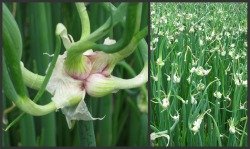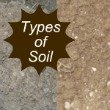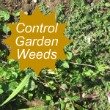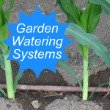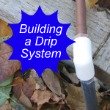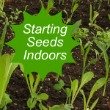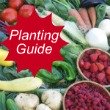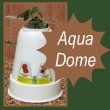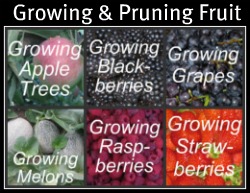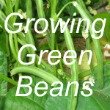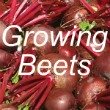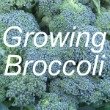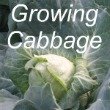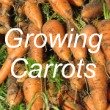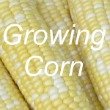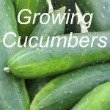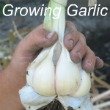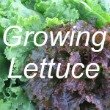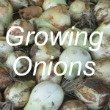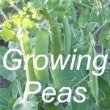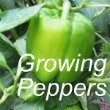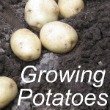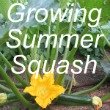|
Growing Carrots
Growing carrots is garden venture where you can be successful. Learning how to grow carrots is easy to do in cool northern climates. Carrots add color, nutrition, and variety to your diet. Carrots are cold hardy and can be planted early in the spring in climates that are subject to frost. Planting Carrots Planting Carrots

My favorite variety of carrots is the Danvers Half Long. These are shorter than the others and grow straighter in clay soils. These are a non-hybrid variety that breeds true year after year. So you can harvest the seeds from one year to another. Don’t try growing carrots in tropical climates like Guam. You’ll get beautiful tops but no carrot root. I’ve lived there and tried growing them. It doesn’t work. Back to Top Thinning CarrotsWhen the roots of the carrot plant are about 2-3 inches long, you’ll need to thin them. This is important so that you have one good plant every 2 inches. If the carrots are too close, they grow together and get tangled around each other. Thinned carrots will grow straight and big.
Back to Top 
Growing CarrotsOnce the carrots are up and growing, it takes little effort to keep them growing strong. The only two things you’ll need to do are to remove a few little
weeds
that may grow around the plant and keep them moist with your watering system. Back to Top Gathering Carrot SeedsThere may be a few plants that will go to seed. If carrots go to seed their first year, they will not produce good seed. To grow your own carrot seeds, you need to plant a mature carrot from last year's crop. Save it in the root cellar over the winter. This mature carrot will go to seed. You’ll notice in the picture that just one plant produces abundant seeds. Note: The root of the carrots that go to seed are small and woody. Most of their energy goes to producing seeds.
Let the plant mature and harvest the seed floret at the end of the growing season. After the seed head is thoroughly dry, remove the seeds from the head. Use a series of little screens to separate the chaff from the beautifully grown seeds. Back to Top Harvesting Carrots
You can use your growing carrots all summer long. The easiest time to dig up a carrot is right after they’ve been watered. At the end of the season when it starts to freeze at night, dig up the all the carrots. Cut the tops off the carrots. You’re also cutting off any green that might be on the upper part of the orange root. If you leave any green on the carrot, it will tend to grow from that green portion later in the winter. This will cause the carrot not to store as well. Back to Top Storing Carrots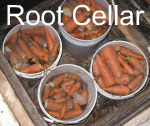
After harvesting and removing the tops, the carrots are placed in the root cellar for the winter. See
Root Cellar. 
Another way to store your carrots is to
can them.
It’s quick and easy to open a jar of carrots and use them in a soup or some other dish that calls for carrots. Back to Top Return to:Gardening Vegetables from Growing Carrots |








